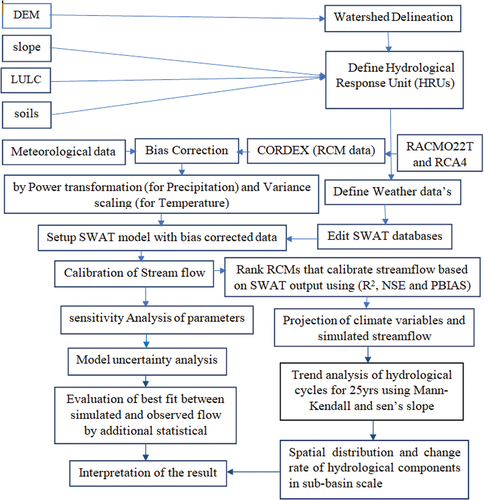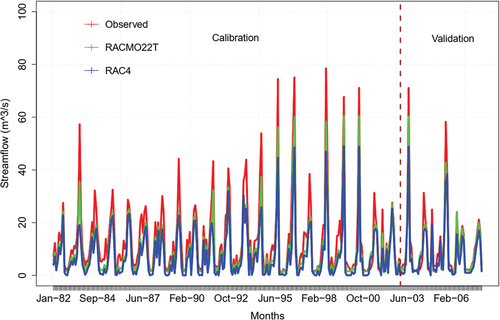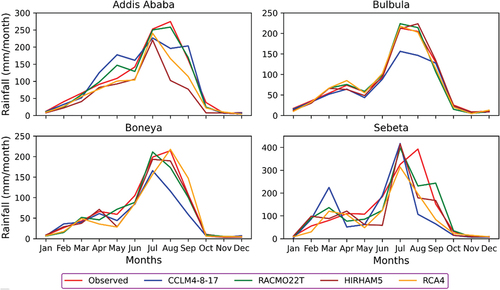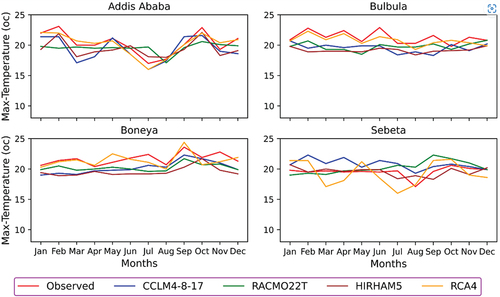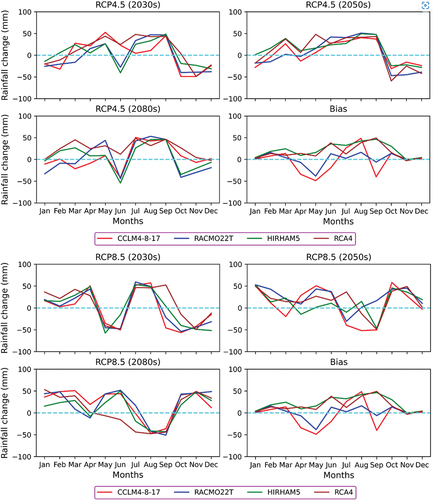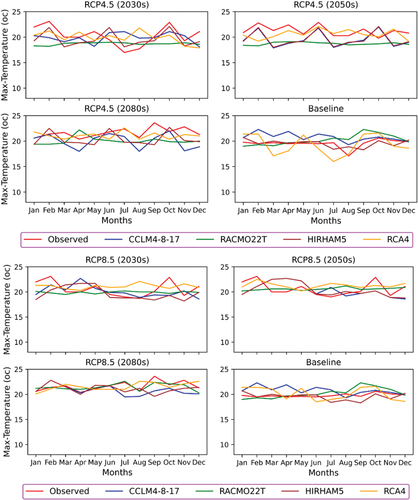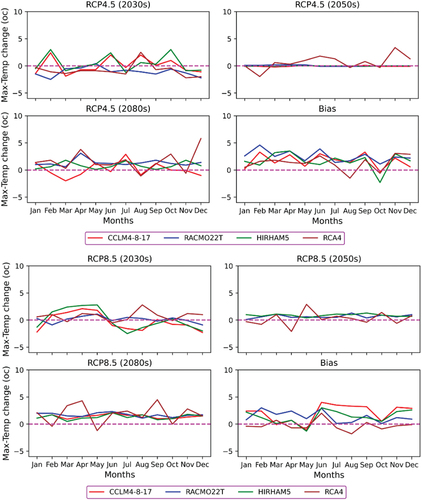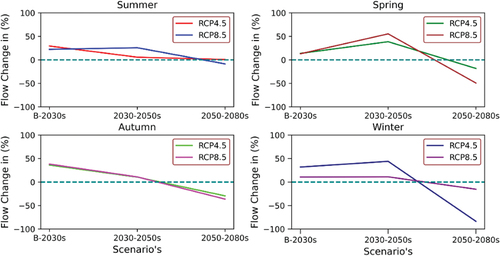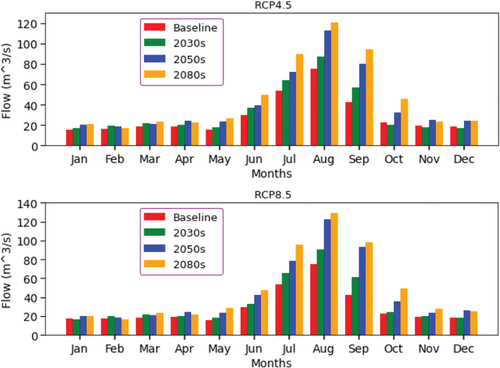Figures & data
Table 1. Meteorological and spatial data used as an input for the SWAT model.
Table 2. Soil classification in the study area.
Table 3. Study area land use land cover classifications.
Table 4. The lists of RCMs and their driving models under RCP8.5 and RCP4.5 scenarios.
Table 5. Flow parameters ranked according to their sensitivity from SWAT output.
Table 6. Parameters used for calibration and their lowest to the highest boundary condition.
Table 7. SWAT and RCM’s performance evaluation using an objective function.
Table 8. Times series-based performance assessment of RCMs for measured against simulated.
Table 9. Statistical relationship of observed and simulated streamflow by frequency-based metrics.
Figure 5. Mann–Kendall test (significance level 0.05) and Sen’s slope (β > 0 increasing trend and β < 0 decreasing trend) for annual variability analysis.
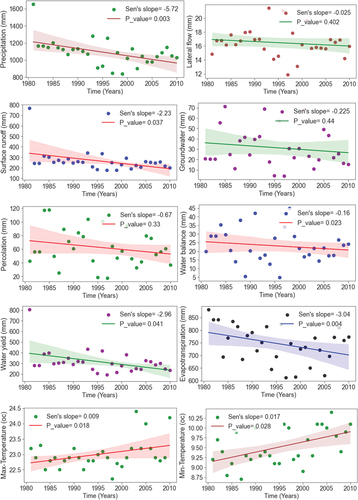
Table 10. Correlation coefficients of major hydrological components.
Figure 6. The interpolated spatial variability maps of mean annual hydrological components at the subbasin scale.
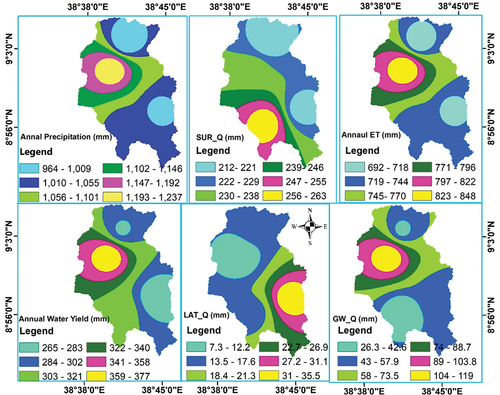
Table 11. Percentage change in rainfall projection for both scenarios by season.
Figure 9. Short term, mid-term, and long-term projections of rainfall under RCP4.5 and RCP8.5 scenarios.
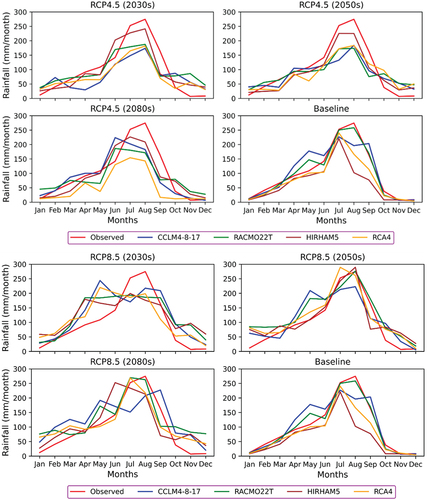
Table 12. Simulated streamflow for short, mid, and long term projected for both scenarios.
Data availability statement
All necessary data used in this research paper were incorporated and included. More supplementary data will be supplied upon request.


